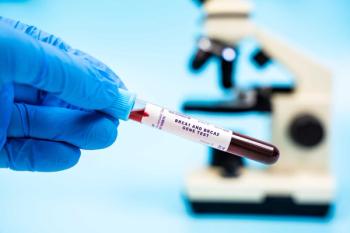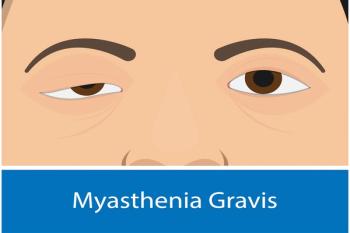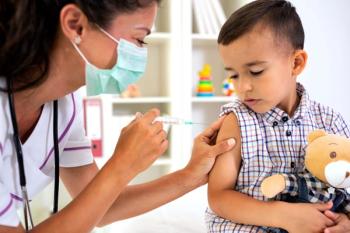
ADVANCE Trial Supports DKRd as New Standard of Care for Newly Diagnosed Multiple Myeloma: Ola Landgren, MD, PhD
Ola Landgren, MD, PhD, shares ADVANCE trial results, which show that adding daratumumab to carfilzomib-lenalidomide-dexamethasone (DKRd) improves outcomes in newly diagnosed multiple myeloma.
In part 2 of an interview with The American Journal of Managed Care®, Ola Landgren, MD, PhD, chief of the myeloma division and leader of the experimental therapeutics program at Sylvester Comprehensive Cancer Center, shares findings from the ADVANCE trial (NCT04268498). This study evaluated the carfilzomib-lenalidomide-dexamethasone regimen with or without daratumumab (DKRd vs KRd) in patients with newly diagnosed
Landgren, the study's lead investigator, will present these data on Sunday, June 15, during the session "Treatment of Newly Diagnosed Multiple Myeloma (NDMM)" at this year's
This transcript was lightly edited; captions were auto-generated.
Transcript
Can you summarize the key findings of the ADVANCE clinical trial? Were there any that particularly stood out or surprised you?
The main analysis was MRD [minimal residual disease] negativity after 8 cycles with the clonoSEQ assay. It showed that 59% of the patients with the DKRd regimen achieved MRD negativity. In the control arm, KRd, the number was 33%.
This is highly significant in favor of the DKRd arm. There is an odds ratio of 2.9 and is highly significant with a P value less than 0.0001. As for the stratifications, and looking at the deltas of improvement for DKRd over KRd in patients above and below the age of 60, which is around the midpoint of the age of patients [enrolled in] the study, we found that DKRd is superior in both groups of patients.
We also showed, when we stratified by age 65 to look for people [who] could be transplant eligible or not, that you see the very similar deltas. Although for older patients, we are running out of statistical power because the numbers go too low. When we also look for stratification for standard-risk and high-risk disease, in the standard-risk population, you see the greatest benefit. In the high-risk population, the delta is almost 20% better for the DKRd.
I would summarize and say that when you have a very effective therapy, patients with high-risk disease—they need it the most, and you still see a 20% improvement in delta. But the patients with standard risk—they benefit the most. I think that the whole idea of so-called risk-adapted therapy, when people look for high-risk and standard-risk [disease] and give the best therapy only to high-risk [patients], that's a flawed philosophy because you see the best outcome with the best therapy in patients with standard risk. My way of thinking, and many other groups, is [to] give the best therapy to every patient. That's really where you see the most good outcomes.
Other secondary end points include progression-free survival. At the median follow-up of 31.2 months, we currently have a trend for significantly better outcomes in the DKRd. Another way of saying it is that at almost 3 years of follow-up, 92% of the patients with a DKRd treatment arm are free from progression; that's a very impressive result. At 3 years, 92% of patients are free from progressive disease. That's actually quite remarkable.
We also, of course, looked at safety data. We looked at adverse events and serious adverse events, and there's really no new signal. Everything looks the same as it does when we look at these individual drugs [during] prior studies. There is no imbalance between the 2 arms.
Another major result from the study is the fact that we were able to enroll 306 patients in a randomized multicenter study for newly diagnosed myeloma in the United States at only 7 independent academic institutions. Many times, trials open at 50 or 100 sites, but we did only 7 sites. These sites were the University of Miami's Sylvester Comprehensive Cancer Center as the lead site. We also had Memorial Sloan Kettering in New York and MD Anderson in Houston. We had Moffitt Cancer Center in Tampa, Florida, Roswell Park Cancer Center, also in New York, Stony Brook Cancer Center in New York, and Huntsman Cancer Center in Utah.
What we conclude is that the DKRd regimen has a significantly better MRD negativity. With almost 3 years of follow-up, we start seeing a trend for better progression-free survival. Therefore, we conclude that DKRd should be a new standard of care for patients [who] are planned for the KRd backbone.
What additional research is needed to build on these results?
I think there are several important questions for the future, and I would summarize [them] in 2 bullets where I see the major future directions. Number one, the correlative science from the ADVANCE study will help us answer very important questions, understanding why some patients achieve and sustain MRD negativity, while that could be patients [who] don't achieve it, or they may lose their MRD negativity.
What are the interactions between the disease biology, the patient's host immune system, and the combination of 3 or 4 drugs? For patients who also had to go through transplantation, what are the interactions with that, as well? How can we better molecularly understand why some patients may need a transplant while many patients don't need a transplant? Do all patients need the additional CD38-targeted antibody to achieve a long-term, sustainable MRD negativity and freedom from progression? That's a very important set of questions, and a lot of people are asking [them]. Hopefully, the ADVANCE study will continue to deliver and provide insights in future studies that we can present at upcoming meetings and papers.
The second of the future direction bullets is ADVANCE 2.0. We already worked on a new study, and this study is just about to open. It's going to be ADVANCE 2.0, using BCMA [B-cell maturation antigen]-CD3 targeted monoclonal antibody elranatamab in combination with KRd or RD [lenalidomide-dexamethosone]. This study is anticipated to open by the end of June 2025, and this will be a very large study.
Newsletter
Stay ahead of policy, cost, and value—subscribe to AJMC for expert insights at the intersection of clinical care and health economics.













































